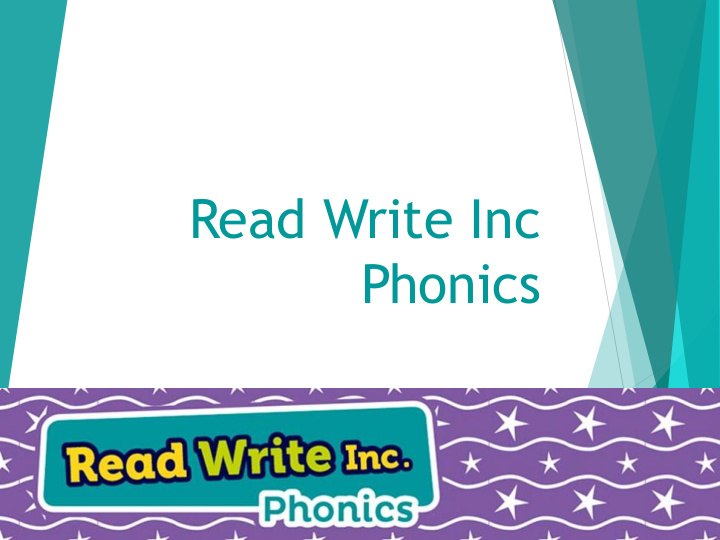



Read Write Inc Phonics
How it works Children are assessed and grouped according to their ability They work in small groups with a teacher or teaching assistant At the end of each half term children will be assessed again
Reading using phonics Children learn to read effortlessly This allows them to understand what they are reading Children will learn 44 sounds with the corresponding letters Children learn to read real and nonsense words
Blending – to read Children read words by blending the sounds together (Fred talk) Speed sound sessions allow children to do this RWI uses pure sound – it removes the ‘uh’ from the sounds
Sound cards
ay/a-e/a/ai/aigh May cake sail
Spelling – ‘Segmenting to Spell’ Fred talk helps children learn to spell Children covert words into sounds This is called Fred fingers
Fred Fingers to model split diagraphs… Bake smile
Red words – ‘Look and remember’ We can not Fred talk red words Red words need to be learnt by site recognition no you said come me he
The Phonics screening check The purpose of the check is to confirm whether individual children have learnt decoding and blending skills to meet an age-appropriate standard. It will be carried out the week beginning Monday 11 th June. If your child is absent they can take the check until Friday 22 June.
What happens during the screening The screening contain 40 words Each child sits one-to-one with the teacher and has to read the words out aloud There are a combination of real words and nonsense words
What happens during the screening There is not a set time limit to complete the screening in but it usually takes between 4-9 minutes. If we think it would be appropriate a child can have a break or stop if they are struggling. If the child does not meet the pass mark they will have to retake the screening test in Year 2. (You will be informed on their end of year school report on this).
What happens during the screening By the end of year 1 it is expected that children are able to recognise the grapheme-phoneme correspondences, segment and blend them confidently in words. For the past few years the expected pass mark has been 32 out of 40. However, the Department for Education does not release the pass mark until a few weeks after the children have completed the check.
Example screening test https://www.youtube.com/watch?v=46SyC6bZOF8&safe =true
How you can help at home… Support your child with their reading and you read to them too. Listening to your child reading is important. If they hear you read, they are hearing how to pronounce unfamiliar words and are developing new vocabulary. Encourage them to decode the sounds e.g. segmenting or drawing on sound buttons (see sound sheets in packs). When you are out and about read signs around you. Practise speed reading the sounds your child has been learning in school.
How you can help at home… Useful websites http://phonicsplay.co.uk http://www.mrthorne.com
Enjoy some games!
Recommend
More recommend